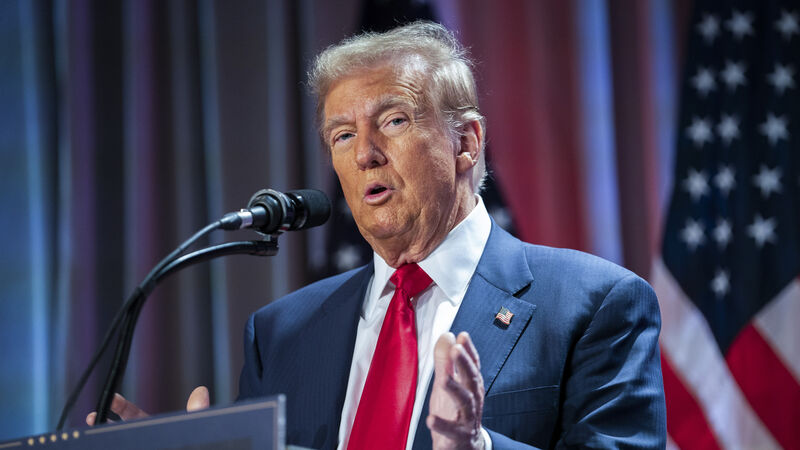John Whelan: Ireland racks up €46bn surplus on US as tariffs loom

US president-elect Donald Trump: 'We will begin charging those that make money off of us with trade'.
Just as Donald Trump takes office, Ireland’s surplus income from trade with the US hits a record high, not the ideal timing for drawing attention to a matter that has irked the incoming US president.
It’s no secret that Trump is disgruntled by the EU’s trade surplus and has Ireland in his sights when considering additional tariffs. But he deems himself something of a dealmaker, and that could make it crucial for both the EU and Ireland to identify areas for concessions and deals.
In the year to October, Ireland’s exports to the US hit a total of €67.4bn with imports a mere €20.8bn. That surplus of €46bn in the first 10 months, and expected to rise to an all-time high for the full year of 2024, pushes Ireland’s trade surplus to the second highest in the EU, just behind Germany's.
The seriousness with which the incoming US president takes the issue was further underscored last Tuesday when he said on Truth Social:
Trump’s tariff threats are not new. They were part of his mantra in his first term in office.
On a wider front, tariffs have a long and storied history as both a revenue-raising tool and a way of protecting strategically important industries in many different countries. Size gives the US market power and the ability to dictate terms.
The Maga rhetoric is: Other countries need us more than we need them and we will use that power to make America great again.
There is also logic supporting the US negotiating position.
The EU sold €156bn more to the US in 2023 than they imported, and motor vehicles made up the biggest portion of this. Adding to the source of aggrievement, the EU tariffs on various products exceed those imposed by the US. Take motor vehicles: the EU place 10% tariffs on imports from the US, whereas the US tariff on cars from Europe is a mere 2.5%.
There is no question that there is room for negotiation with the incoming Trump administration, and it is overdue.
Former EU trade commissioner Phil Hogan, in August 2020, announced an agreement on a package of tariff reductions to enable more balanced trade with the US.
These tariff reductions negotiated with Trump’s trade representative at the time, Robert Lighthizer, were the first US-EU negotiated reductions on duties in more than 20 years.
Fortunately for Ireland, our largest and main exports to the US are pharmaceuticals, which the US has a shortage of.
The US imports a vast quantity of medicines from right across the EU. Increasing the prices on pharmaceuticals by tariffs, when US prices are already high and supplies are low, is unlikely. This dependency favours the EU and will provide some leverage in negotiations with the incoming Trump administration.
And of course, there are other areas where trade balancing can be achieved, without damaging EU exporters. Europe could increase its purchase of US products, such as LNG to replace the Russian gas blockade. In terms of defence, the EU could propose increasing its defence spending to 3% of GDP, with a commitment to purchasing more from US companies. Additionally, the EU could open up defence funding initiatives to non-EU companies, as is currently being discussed. Increasing those purchases might be an effortless way to reduce the bilateral trade surplus to some extent.
The EU taking a protectionist approach with the Trump administration will be bad news, especially for export-oriented countries like Ireland. Yet long before tariffs come into effect, the uncertainty surrounding protectionist trade policy will have an economic impact on US investment sentiment, potentially damaging Irish jobs growth and corporation tax revenues.
In the longer term, confrontation with Trump will strain trade relations and further erode the EU’s struggling manufacturing sector. Back in 2017, the EU economy was strong.
This time around, it is experiencing anaemic growth and is struggling with a loss of competitiveness. A looming new trade war could push the eurozone economy from sluggish growth into recession.













